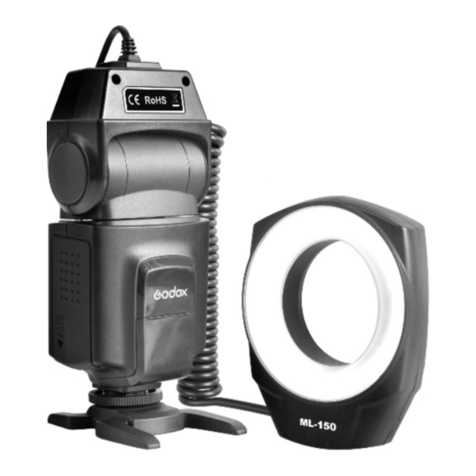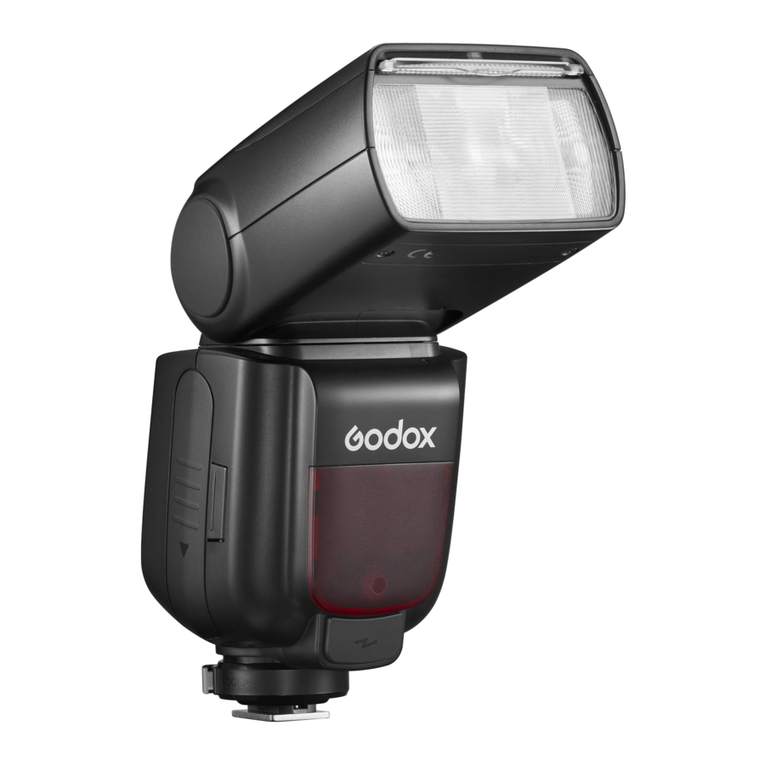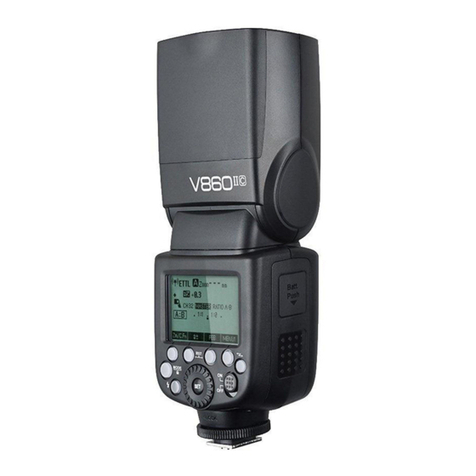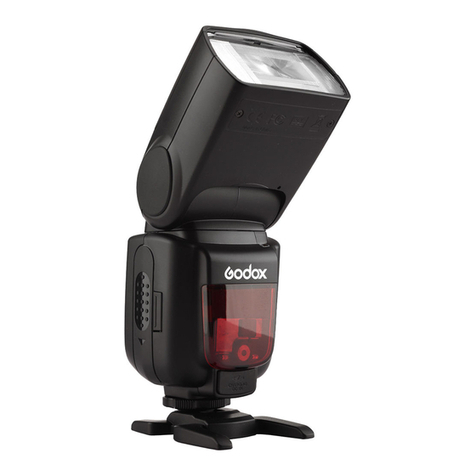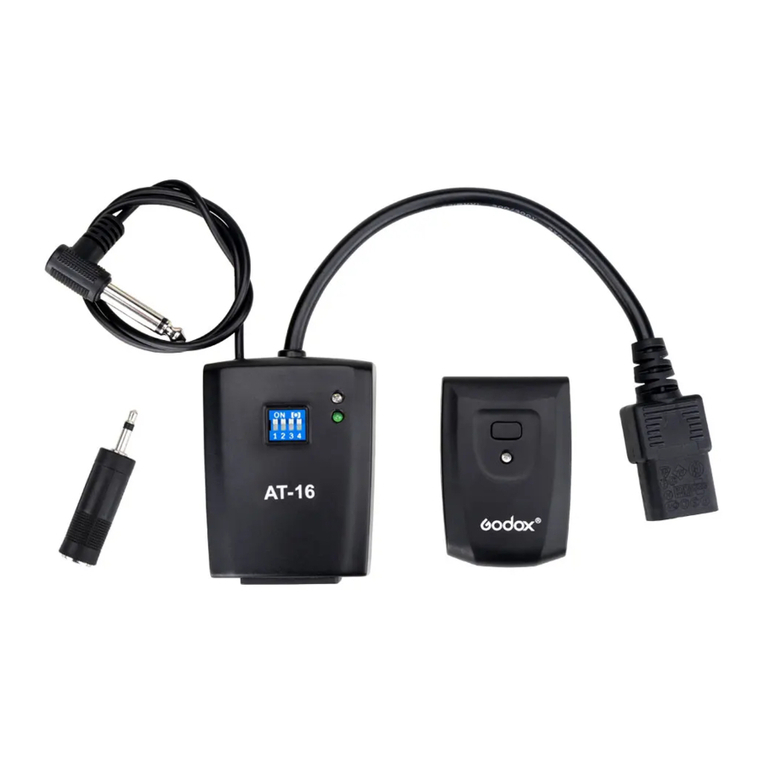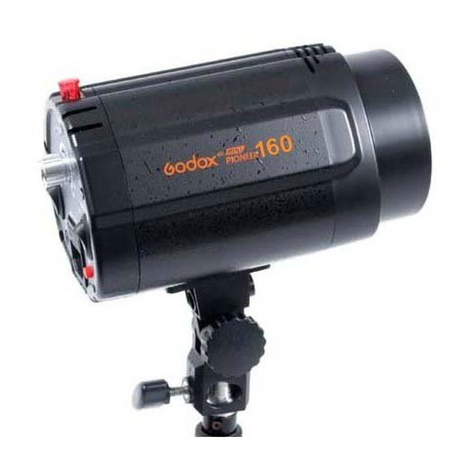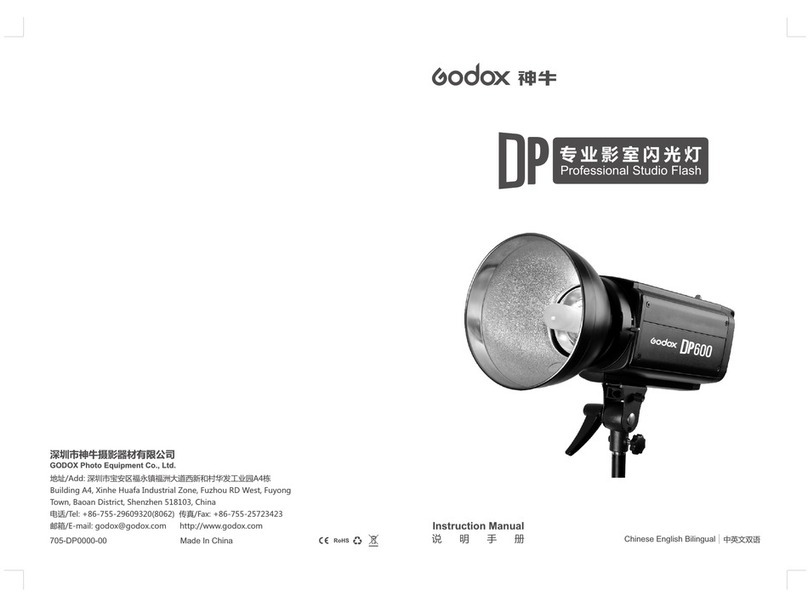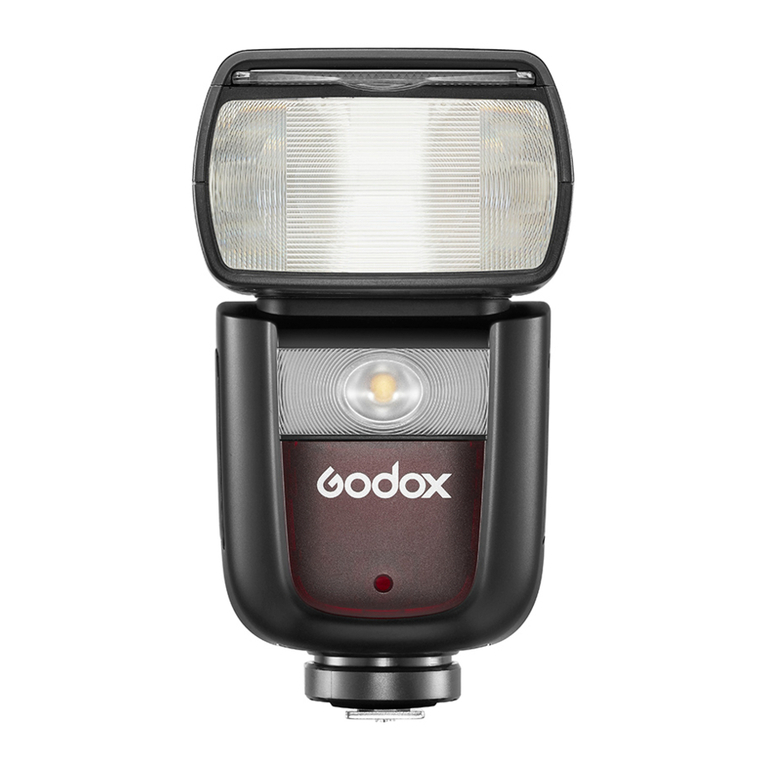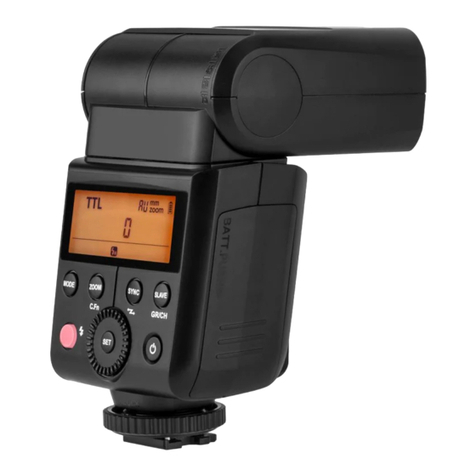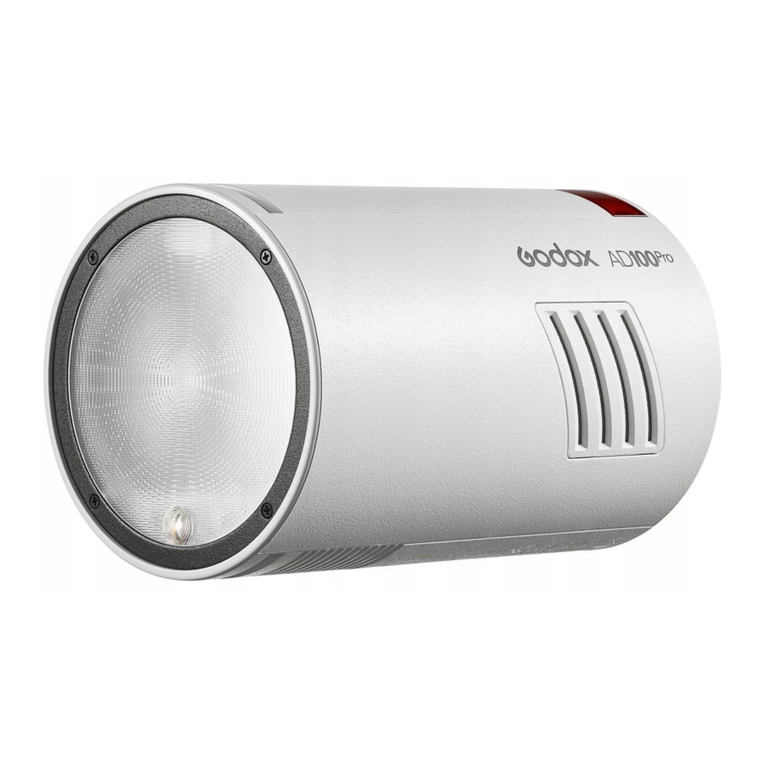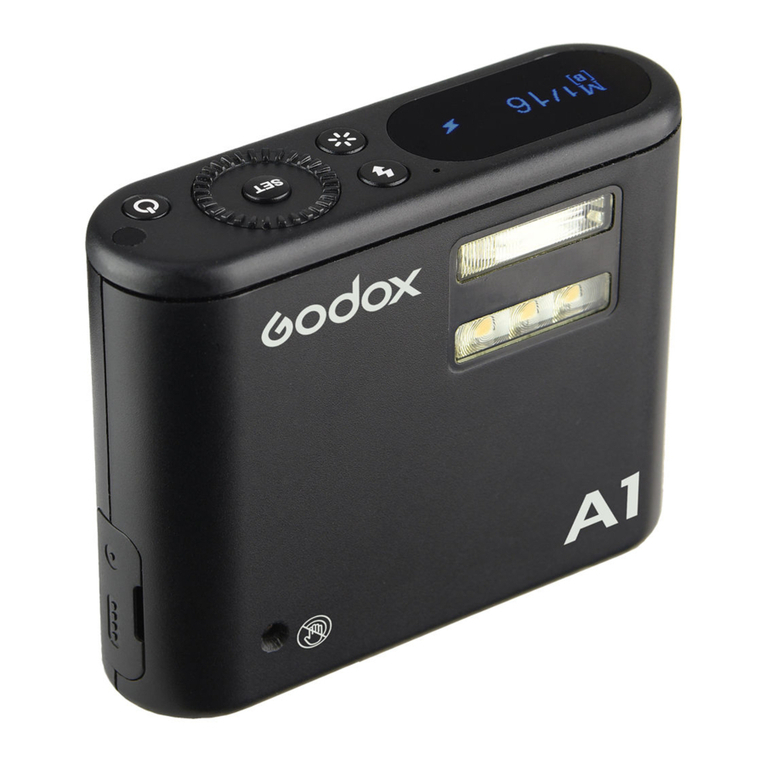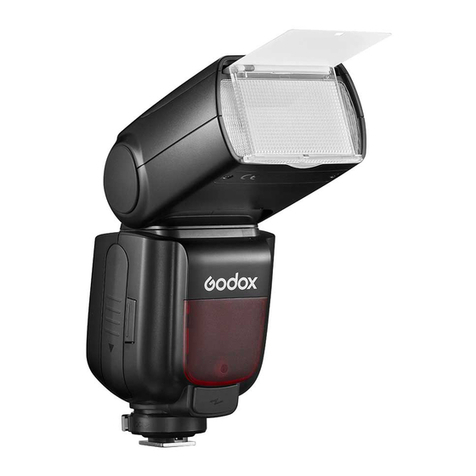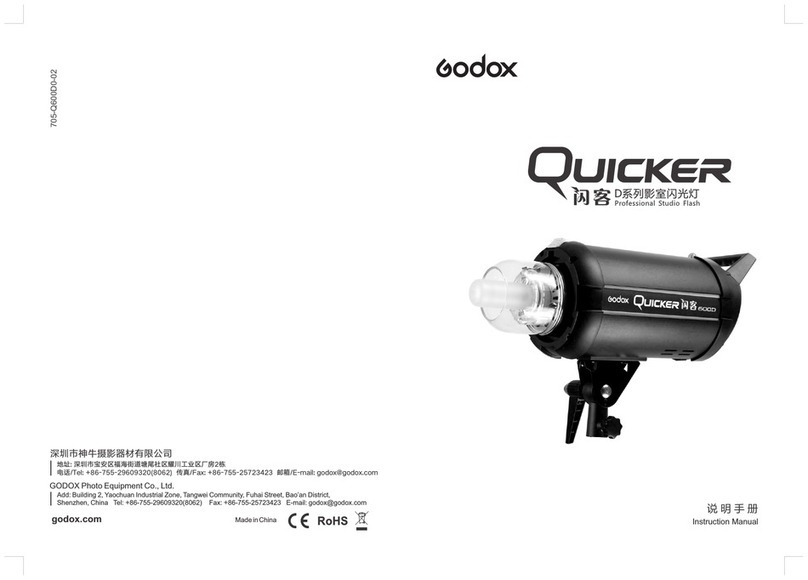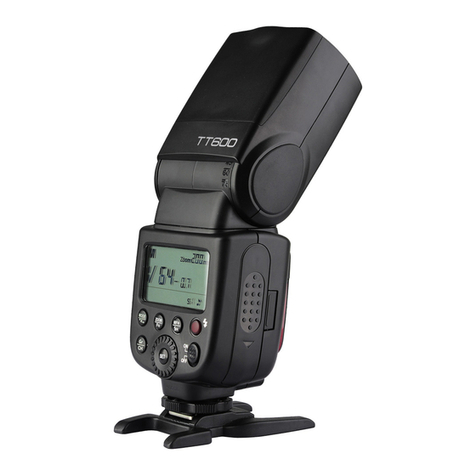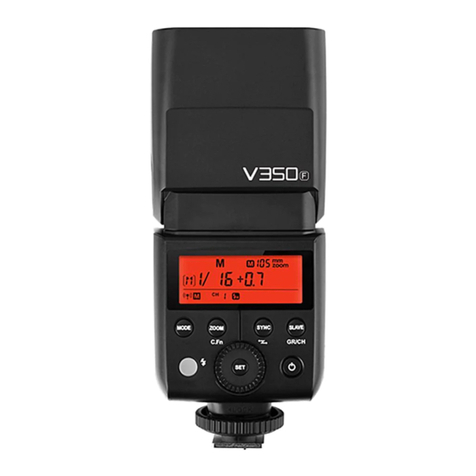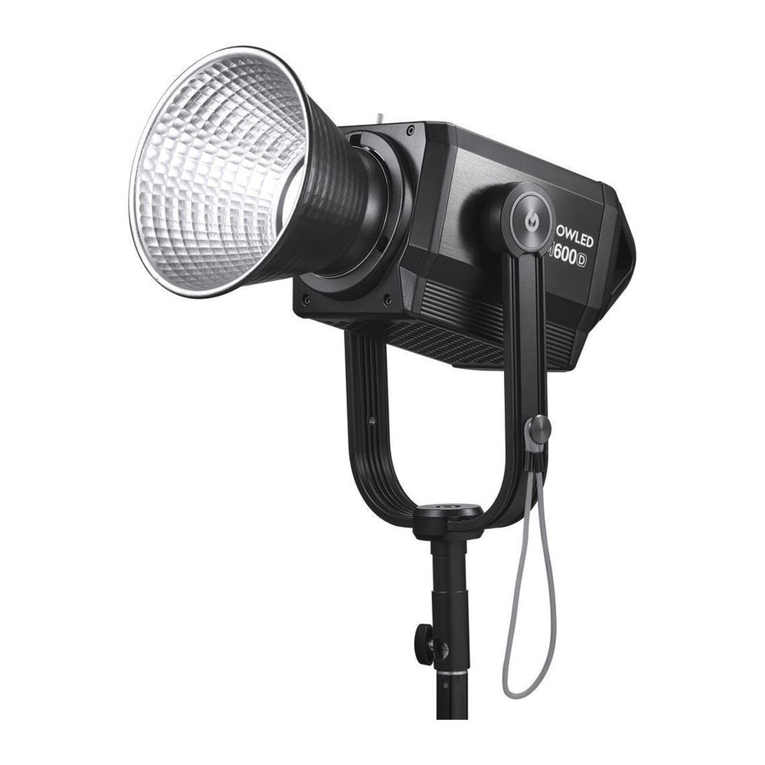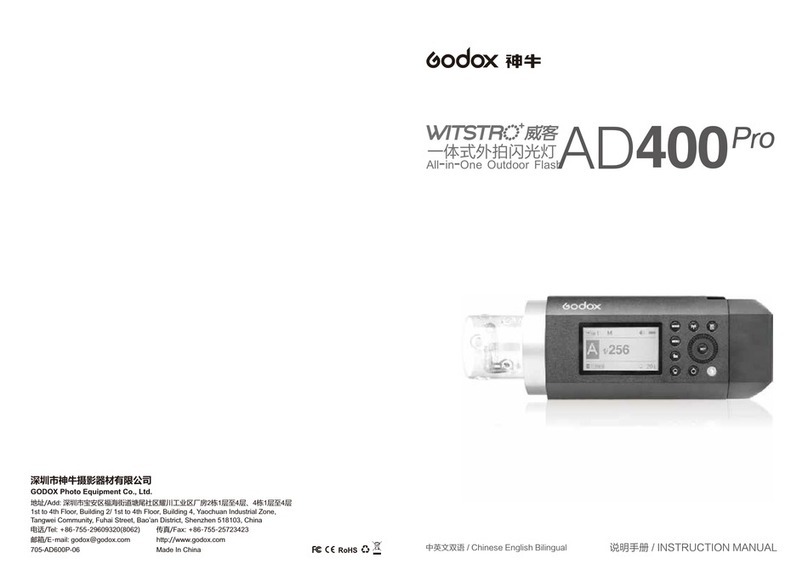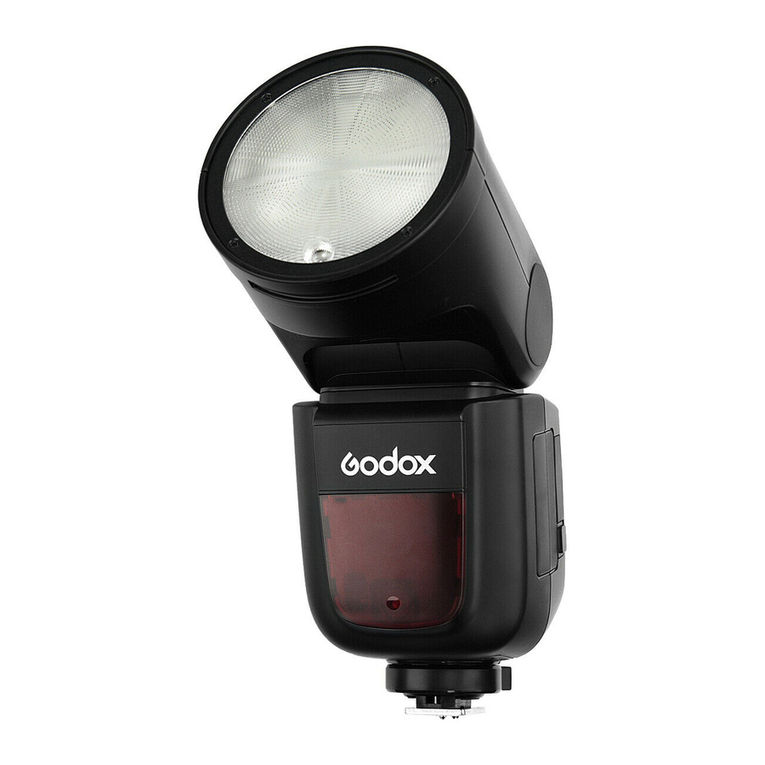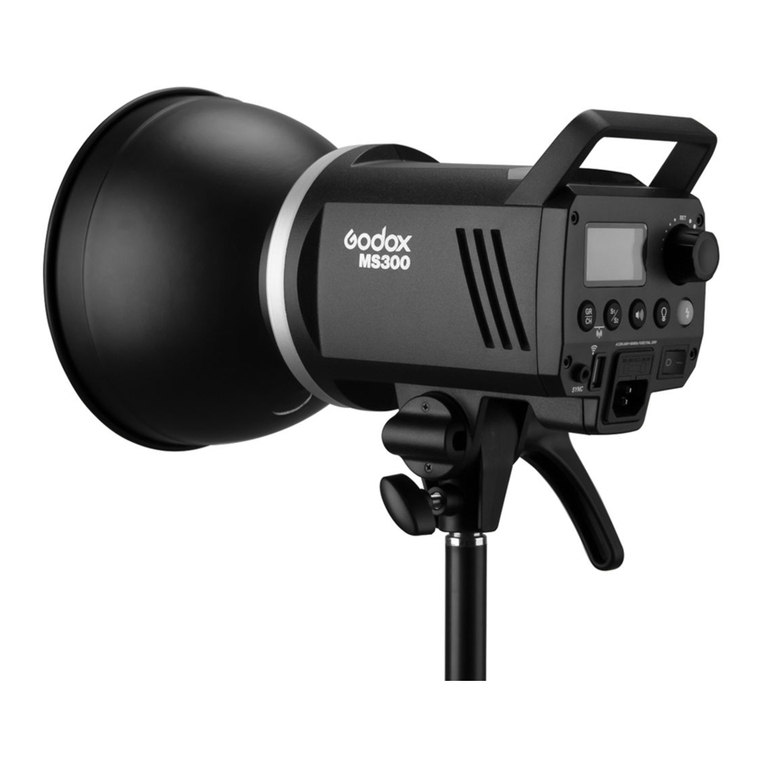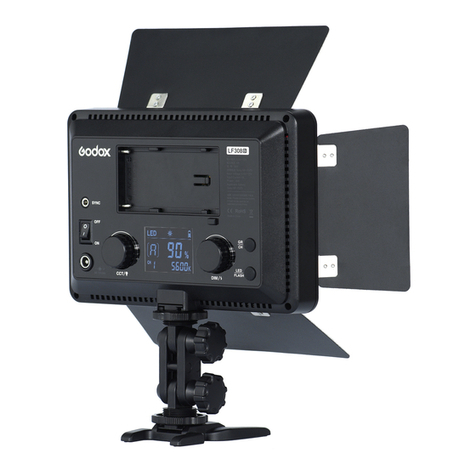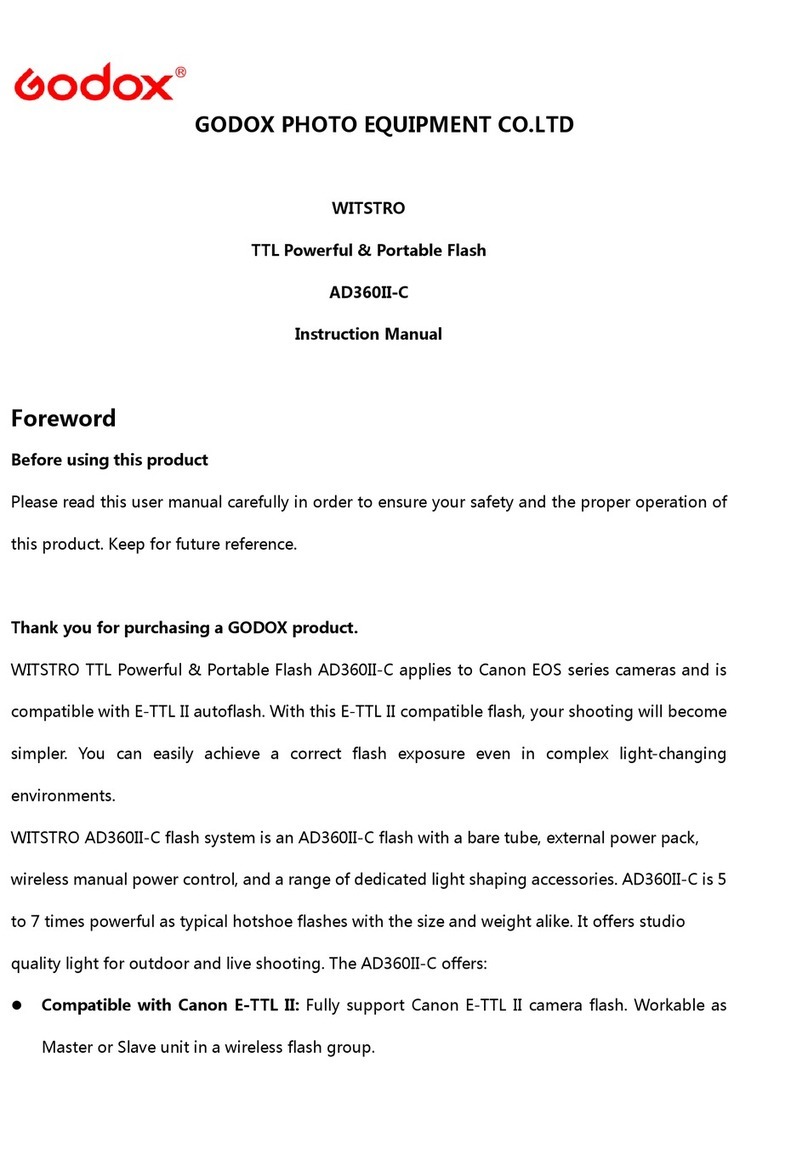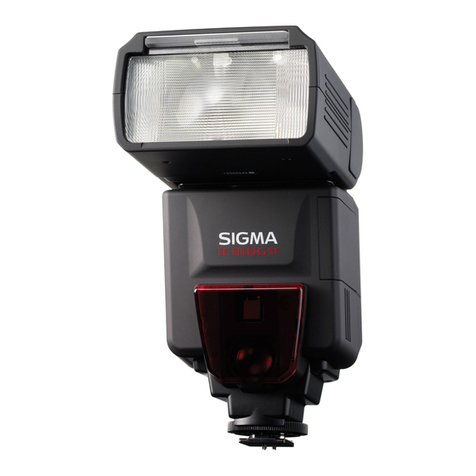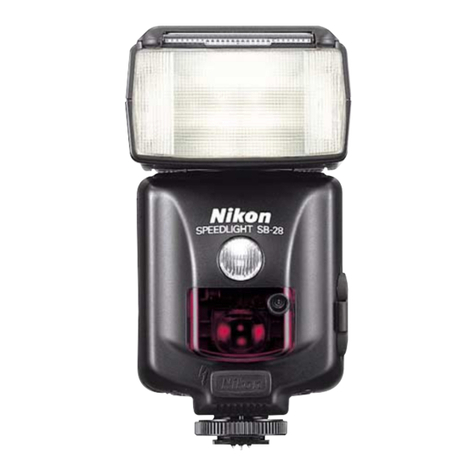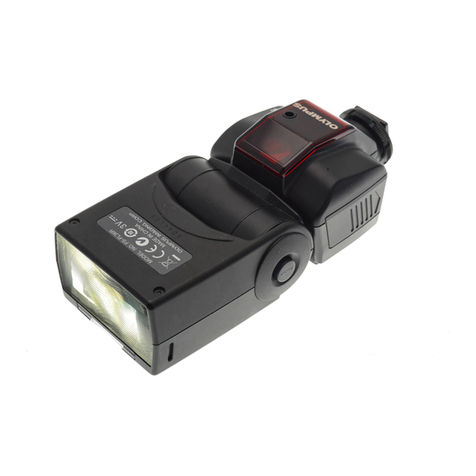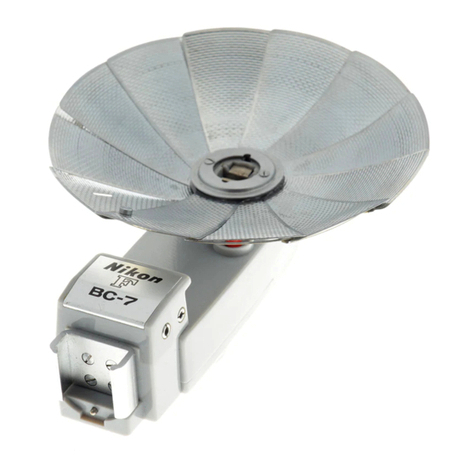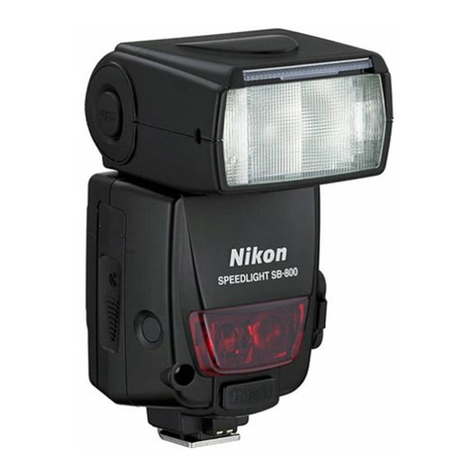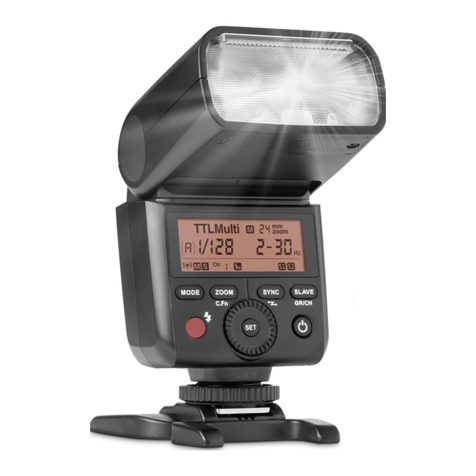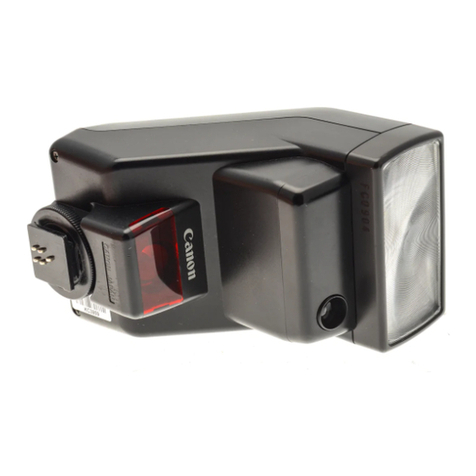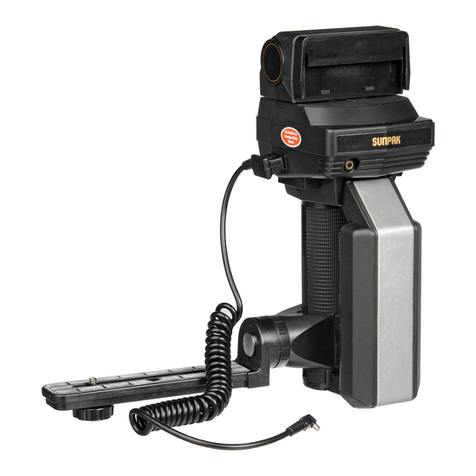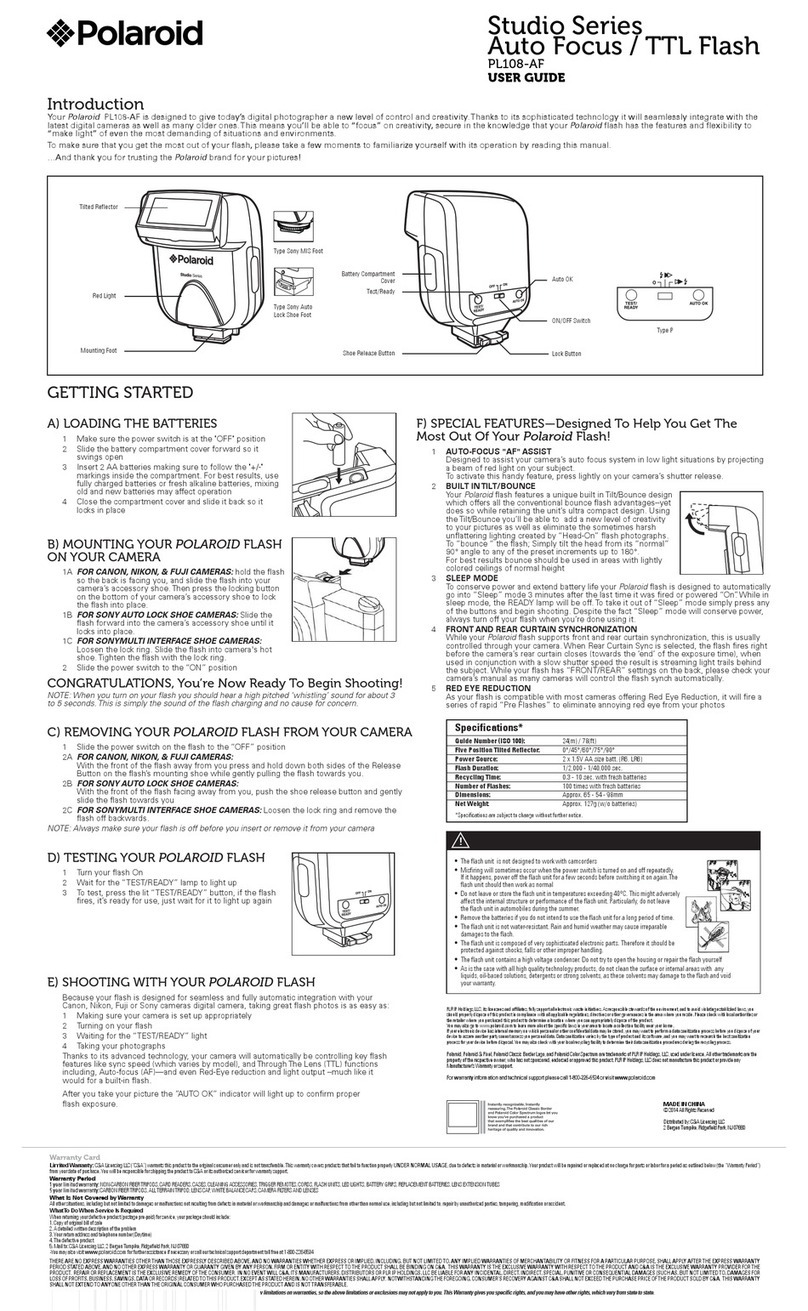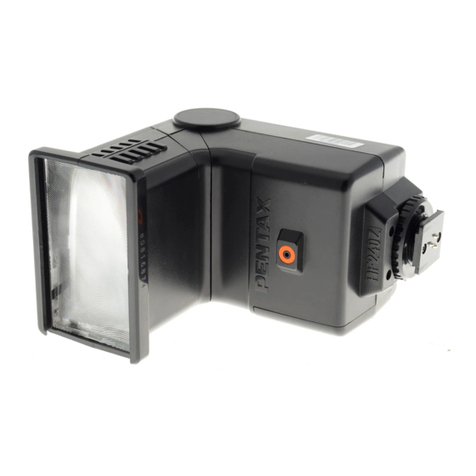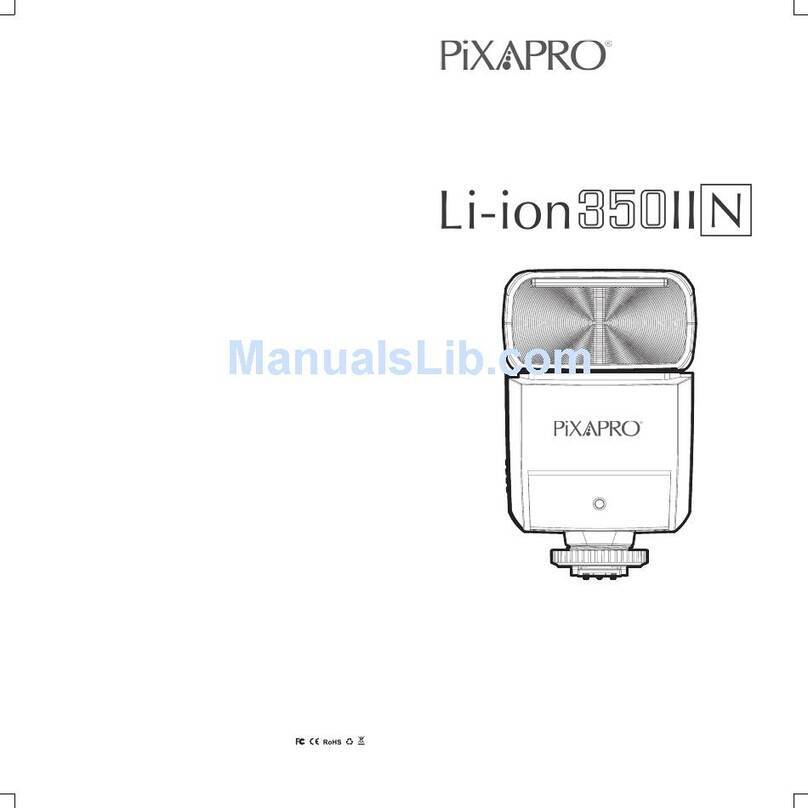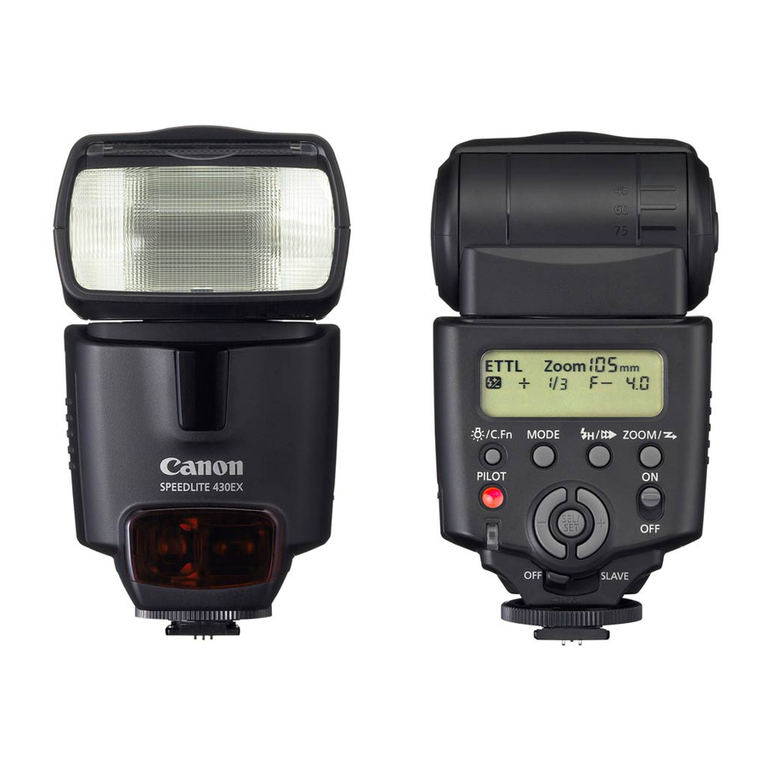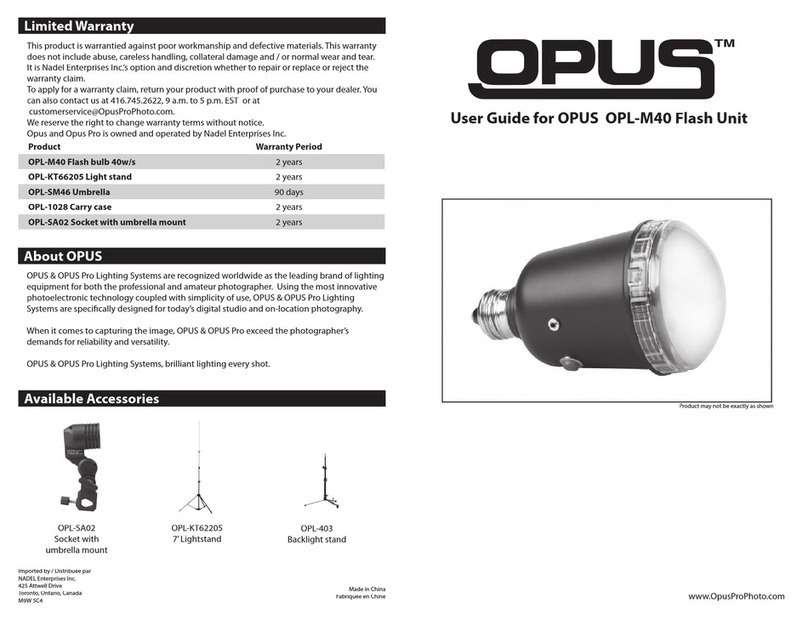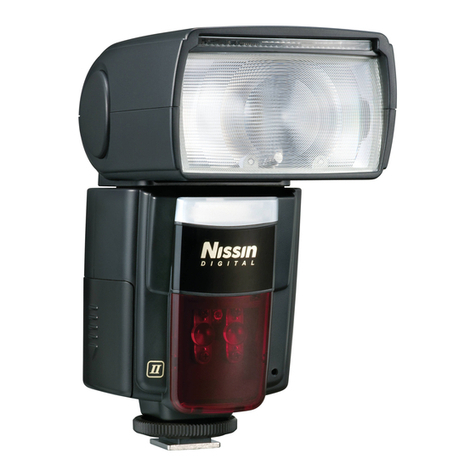MODEL
ON/OFF
● Features
1. This flash unit uses Li-ion polymer battery which has long runtime.
The available charge-and-discharge times are 480.
2. It is reliably safe. The inner circuit is against overcharge,
overdischarge, overcurrent, and short circuit.
3. Take only 3.5 hours to fully charge the battery by using the
standard battery charger.
● Cautions
1. Do not short circuit.
2. Do not expose to rain or immerse into water. This battery is not
water proof.
3. Keep out of reach of children.
4. No over 24 hours’ continuous charging.
5. Store in dry, cool, ventilated places.
6. Do not put aside or into fire.
7. Dead batteries should be disposed according to local regulations.
8. If the battery had ceased using for over 3 months, please make a
full recharge.
9. If do not use it for a long time, please charge the battery to
approx. 60% before placing it.
10. It is recommended to use a brand-new battery after charging
and discharging over 500 times or being used over 3 years.
● Loading and Unloading the Battery
Battery
To unload the battery, hold
1down the battery remove
button and push the battery
downwardly to take it out.
According to the triangle sign
2on the battery pack, insert it
into the compartment until a
white knob locks the battery
with a click sound.
● Battery Level Indication
Make sure the battery pack is securely loaded in the flash. Check
the battery level indication on the LCD panel to see the remaining
battery level.
Battery Level Indication
3 grids
2 grids
1 grid
Blank grid
Blinking
Attaching to a Camera
Attach the Camera Flash.
1● Rotate the hotshoe fixing
buckle to the left and insert
the camera flash into the
camera's hotshoe.
Secure the Camera Flash.
2● Rotate the hotshoe fixing
buckle to the right until it
locks up.
Detach the Camera Flash.
3● Press the button and
rotate the hotshoe fixing
buckle to the left until it is
loosened.
Power Management
Use ON/OFF Power Switch to power the flash unit on or off. Turn
off if it will not be used for an extended period of time. Setting as a
transmitter flash, it will turn the power off automatically after a
certain period (approx. 90 seconds) of idle use. Pressing the
camera shutter halfway or pressing any flash button will wake up
the flash unit. Setting as a receiver flash, it will enter sleep mode
after a certain period (adjustable, 60 minutes by default) of idle use.
Pressing any flash button will wake it up.
The battery level is going to be used out
immediately. And the flash will auto power off
in 1 minute.
Note: Please recharge the battery as soon as
possible (within 10 days). Then, the battery can be
used or be placed for long period.
Meaning
Full
Middle
Low
Lower battery, please recharge it.
LED Modeling Lamp
Press the Modeling Lamp Setting button to set the modeling lamp.
Short press the Set Button to turn on or off the modeling lamp.
When turning the modeling lamp on, turn the select dial to set its
brightness. There are 10 levels(01~10) for choice.
- 39 - - 40 -
